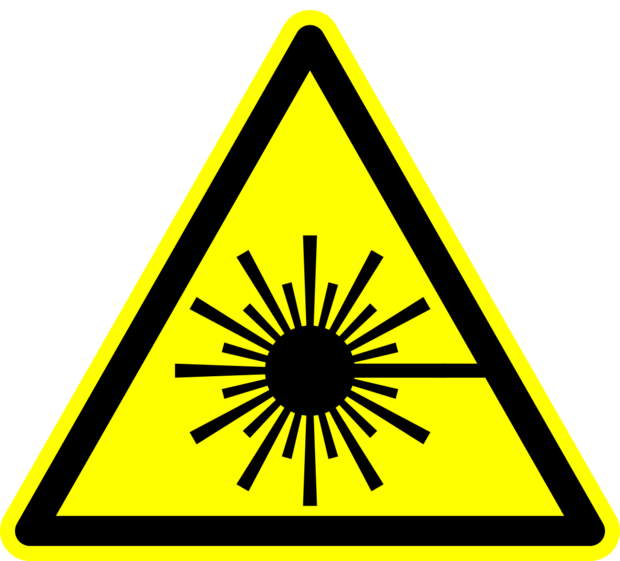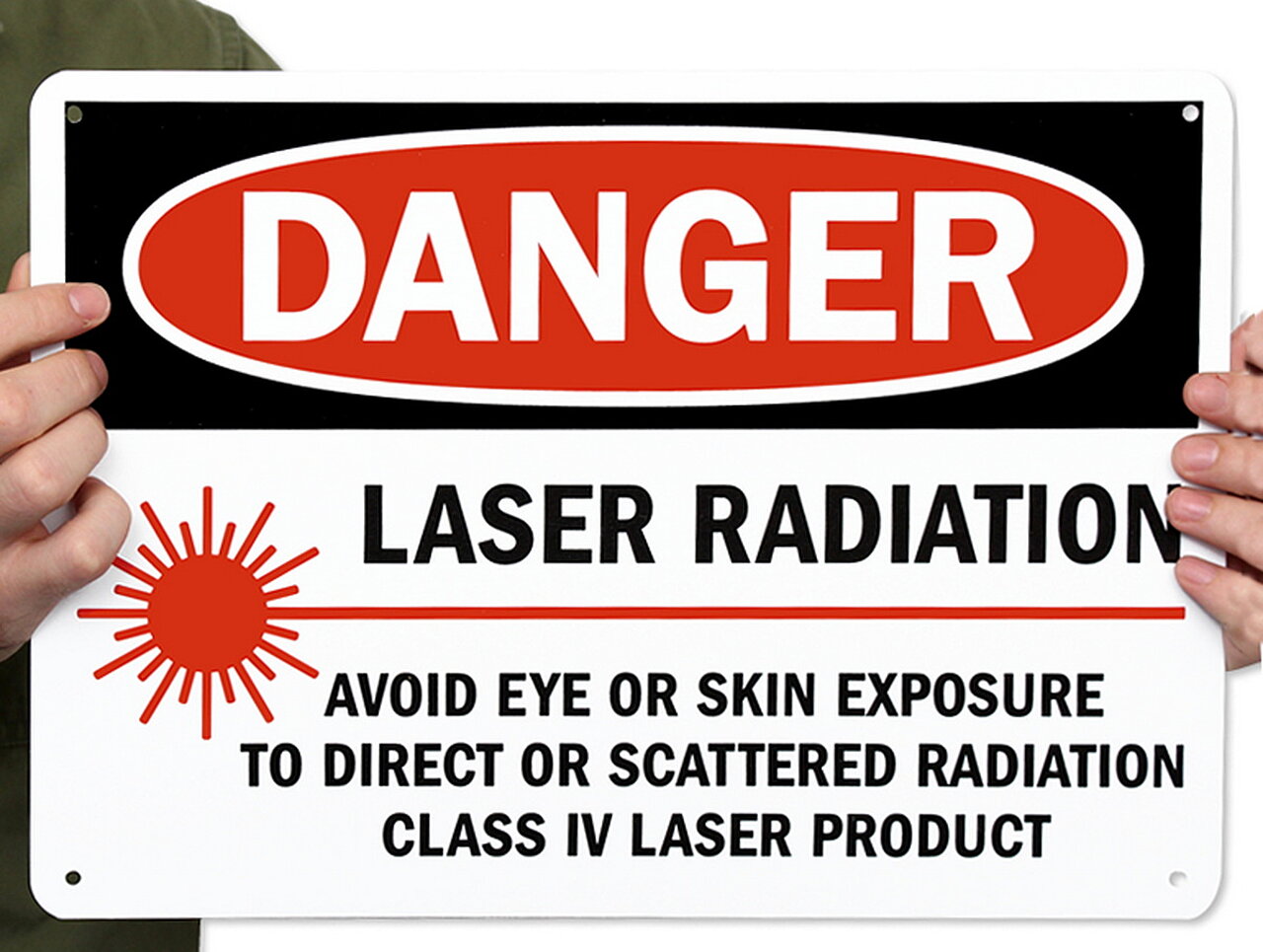
POTENTIAL HAZARDS of Laser Welding
POTENTIAL HAZARDS of Laser Cleaning
Laser safety: Laser protection class 4 applies to all our manual laser welding and Cleaning equipment when in operation.
Different measures are therefore required on the customer side to ensure laser safety, such as:
- the appropriate training of employees,
- wearing special Personal protective equipment (PPE)
- setting up a separate laser safety area

LASER WELDING SAFETY – WE TAKE IT VERY SERIOUS
You too have to take it VERY serious!
Laser radiation of infrared fibre lasers can cause serious and lasting damage to the human eye – so a handheld laser is not a toy. But simple precautions and our inherent safety design make this a safe solution that meets the requirements of globally active customers and their safety organizations.
Lasermach PhotonWeld© is a Class 4 laser system, requiring:
- Personal protection (laser safety eyewear)
- Safety curtains to block operating area from unprotected bypassers
- Laser safety officer (1 day training)
Lasermach offers superior laser safety:
- CE marking based on an in-depth risk analysis following Machinery Directive EC2006/42/EG.
- a true CE design according to machinery directive EC2006/42/EG
- Components with safety performance level D, including Safety PLC instead of custom control board
- Interface for connection of external safety devices (E-Stop, interlock and laser warning light)
Common Laser Hazards at laser Welding and laser cleaning
One aspect to remember about laser welding safety is the variety of hazards associated with the systems which are also prevalent in many other forms of equipment. Basic safety training should mean workers are already familiar with some of these issues, but employers should be aware of:
- intense visible and invisible light
- Compressed gasses
- Intense radio frequency energy
Light Hazards
Due to the laser safety checks in place for welding systems, units are designed in such a way to prevent operators from coming into direct contact with the laser beam.
One of the issues that can arise, however, involves unintentional reflected light, which falls into the following categories:
- Diffuse Reflections – This type of reflection occurs when a reflective surface’s irregularities create a scattering of light in all directions. Of the types of reflections, this is the safer of the two since energy is being divided in many directions and weakened.
- Specular Reflections – This type of reflection is produced in a way that is more mirror-like, recreating close to 100% of the original light compared to the scattered light of diffuse reflections. Though there is a higher danger associated with this form, it is much less common and laser welding systems are often designed to eliminate specular reflective surfaces that would come across the beam’s path.
With proper safety procedures in place, and by following guidelines which accompany your laser welding systems, these hazards should be greatly minimized.
Skin and Eye Hazards
Due to laser engraving safety checks in place, the effects of lasers on skin are usually considered of secondary importance. Compared to laser welding and engraving systems, high-powered infrared lasers utilized in applications for welding and cutting pose a much greater risk of injury.
Some potential effects that can occur if safety procedures are not followed include mild reddening, blistering, and charring, all of which are usually reversible or repairable. Other potential issues could include ulceration, scarring of the skin, de-pigmentation and damage to underlying organs.
In regards to eye safety, some forms of laser beams operate at a wavelength which if exposed to the eye can pass beyond to the retina. With no pain indicators present and the beam being invisible, someone exposed can be unaware at the time of occurrence.
This is just another reason why utilizing industry-standard laser safety glasses is so vital to maintaining a safe and healthy workspace.
Electrical Hazards
An additional hazard that can be posed when using laser systems is that of electrical shocks. Some of the ways shocks can occur is through contact with:
- Exposed utility power utilization
- Device controls
- Power supply conductors operating at potentials of 50+ volts
Operators and service workers for laser welding systems must be especially careful to avoid these dangers by following standard safety protocols. These hazards could be experienced during:
- Set-up and installation
- Maintenance and service
- Troubleshooting, if equipment protective covers are removed
The electrical injuries that can be sustained from improper and haphazard use of laser systems can include everything from a slight tingle to serious bodily injury to death. To avoid accidental contact with these energized conductors, laser welding units utilize a barrier system within the equipment.
Safety Classifications
Depending upon the risk of a specific type of laser, it is graded from Class I to Class IV. Laser welding machines tend to be graded as Class IV lasers, making laser welding safety all the more important.
Two important additional classifications to keep in mind are the Maximum Permissible Exposure (MPE) and Nominal Hazard Zone (NHZ) designations.
- Maximum Permissible Exposure – This is the highest level of laser radiation an individual can be exposed to without receiving harmful physical effects to the eye or skin. Control measures for laser welding systems are in place to ensure any laser radiation emitted falls below the MPE.
- Nominal Hazard Zone – To create conditions for flexibility in laser welding applications, the laser beam of the unit is often not fully enclosed for practicality reasons. In these instances, it is necessary to define an area of potentially hazardous laser radiation, which is the NHZ. Control measures are then put into place for this area to ensure safety during use of the laser system.
Being fully aware of these classifications and their rationales are vital to ensuring proper workplace laser welding safety.

